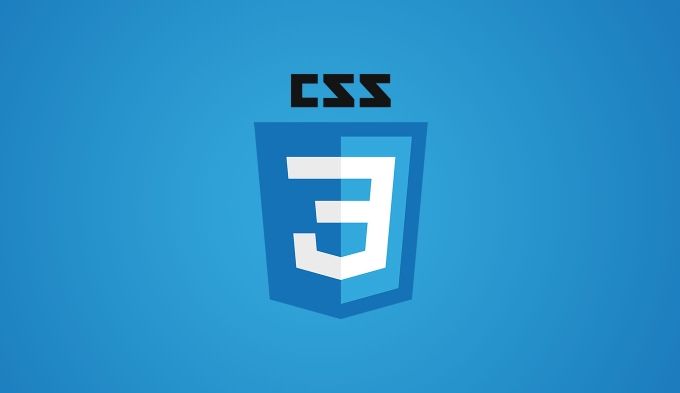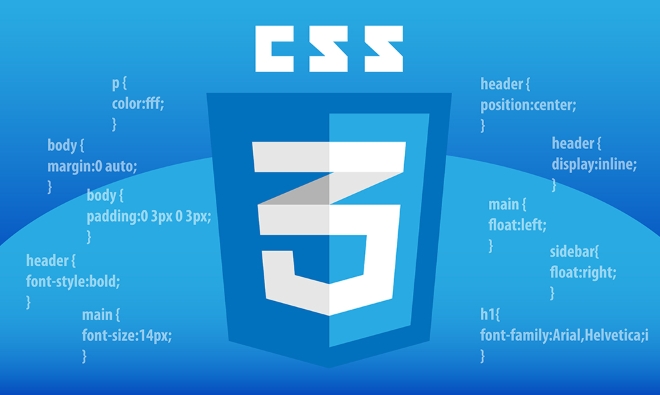The CSS rule set consists of selectors and declaration blocks to define the style of HTML elements. 1. The selector specifies the target element, such as a tag, class, or ID; 2. Declare the block to contain attributes and values to control the appearance of the element. For example: p { color: blue; font-size: 16px; } means to select the paragraph and set the text color and font size. Master these two parts to write effective CSS styles.

The CSS rule set is a core component of a style sheet, which consists of selectors and declaration blocks to define the appearance and layout of HTML elements. To understand how CSS works, you must first understand its basic structure.

Selector
The function of the selector is to indicate which HTML elements you want to apply styles to. It can be a tag name, class, ID, or it can be a more complex combination.
for example:

-
p: Select all paragraph elements -
.highlight: Select all elements withhighlightclass -
#header: Select the element with IDheader
You can also use a combination selector, such as div p , which means selecting all paragraphs inside div .
Some common tips:

- Class selectors can be reused and are suitable for sharing styles for multiple elements.
- The ID selector is highly unique and suitable for elements that only appear once on the page.
- Use commas to separate multiple selectors, such as
h1, h2, h3you can set the title style uniformly
Declaration Block
A declaration block is a set of attributes and values wrapped in braces {} to define the style of the selected element.
For example:
p {
color: blue;
font-size: 16px;
} Here color and font-size are attributes, followed by the colon, and each declaration ends with a semicolon.
Some points to note:
- The attribute must be a legal CSS attribute name and cannot be written casually.
- The value must comply with the specifications of this attribute, such as
coloraccepts color values,font-sizeaccepts length units - If a declaration is invalid, the browser will usually ignore it, but it will not affect the execution of other declarations
Complete rule set structure
A complete CSS rule set looks like this:
selector {
property1: value1;
property2: value2;
}Each line is a declaration that controls the visual representation of the selected element.
For example:
.button {
background-color: #007BFF;
border: none;
padding: 10px 20px;
} This code applies background color to all elements with .button class, removes borders, and adds inner margins.
Small details in actual use
Sometimes you may see some less common writing styles, such as omitting the semicolon of the last declaration, or using comments to organize your code. These are all permitted, but for maintainability it is recommended to maintain a consistent format.
Also, although the browser is not strict with the format, good indentation and line breaks make it easier for you to read and debug the code.
Basically that's it. As long as you master the two core parts of the selector and the declaration block, you can start writing clear and effective CSS rules.
The above is the detailed content of Describe the structure of a CSS rule set. For more information, please follow other related articles on the PHP Chinese website!

Hot AI Tools

Undress AI Tool
Undress images for free

Undresser.AI Undress
AI-powered app for creating realistic nude photos

AI Clothes Remover
Online AI tool for removing clothes from photos.

Clothoff.io
AI clothes remover

Video Face Swap
Swap faces in any video effortlessly with our completely free AI face swap tool!

Hot Article

Hot Tools

Notepad++7.3.1
Easy-to-use and free code editor

SublimeText3 Chinese version
Chinese version, very easy to use

Zend Studio 13.0.1
Powerful PHP integrated development environment

Dreamweaver CS6
Visual web development tools

SublimeText3 Mac version
God-level code editing software (SublimeText3)
 What are common CSS browser inconsistencies?
Jul 26, 2025 am 07:04 AM
What are common CSS browser inconsistencies?
Jul 26, 2025 am 07:04 AM
Different browsers have differences in CSS parsing, resulting in inconsistent display effects, mainly including the default style difference, box model calculation method, Flexbox and Grid layout support level, and inconsistent behavior of certain CSS attributes. 1. The default style processing is inconsistent. The solution is to use CSSReset or Normalize.css to unify the initial style; 2. The box model calculation method of the old version of IE is different. It is recommended to use box-sizing:border-box in a unified manner; 3. Flexbox and Grid perform differently in edge cases or in old versions. More tests and use Autoprefixer; 4. Some CSS attribute behaviors are inconsistent. CanIuse must be consulted and downgraded.
 Describe the `vertical-align` property and its typical use cases
Jul 26, 2025 am 07:35 AM
Describe the `vertical-align` property and its typical use cases
Jul 26, 2025 am 07:35 AM
Thevertical-alignpropertyinCSSalignsinlineortable-cellelementsvertically.1.Itadjustselementslikeimagesorforminputswithintextlinesusingvalueslikebaseline,middle,super,andsub.2.Intablecells,itcontrolscontentalignmentwithtop,middle,orbottomvalues,oftenu
 What is the accent-color property?
Jul 26, 2025 am 09:25 AM
What is the accent-color property?
Jul 26, 2025 am 09:25 AM
accent-color is an attribute used in CSS to customize the highlight colors of form elements such as checkboxes, radio buttons and sliders; 1. It directly changes the default color of the selected state of the form control, such as changing the blue check mark of the checkbox to red; 2. Supported elements include input boxes of type="checkbox", type="radio" and type="range"; 3. Using accent-color can avoid complex custom styles and extra DOM structures, and maintain native accessibility; 4. It is generally supported by modern browsers, and old browsers need to be downgraded; 5. Set accent-col
 How to compile SCSS to CSS?
Jul 27, 2025 am 01:58 AM
How to compile SCSS to CSS?
Jul 27, 2025 am 01:58 AM
InstallDartSassvianpmafterinstallingNode.jsusingnpminstall-gsass.2.CompileSCSStoCSSusingthecommandsassinput.scssoutput.css.3.Usesass--watchinput.scssoutput.csstoauto-compileonsave.4.Watchentirefolderswithsass--watchscss:css.5.Usepartialswith_prefixfo
 How to change text color in CSS?
Jul 27, 2025 am 04:25 AM
How to change text color in CSS?
Jul 27, 2025 am 04:25 AM
To change the text color in CSS, you need to use the color attribute; 1. Use the color attribute to set the text foreground color, supporting color names (such as red), hexadecimal codes (such as #ff0000), RGB values (such as rgb(255,0,0)), HSL values (such as hsl(0,100%,50%)), and RGBA or HSLA with transparency (such as rgba(255,0,0,0.5)); 2. You can apply colors to any element containing text, such as h1 to h6 titles, paragraph p, link a (note the color settings of different states of a:link, a:visited, a:hover, a:active), buttons, div, span, etc.; 3. Most
 CSS transitions tutorial
Jul 26, 2025 am 09:30 AM
CSS transitions tutorial
Jul 26, 2025 am 09:30 AM
CSStransitionsenablesmoothpropertychangeswithminimalcode,idealforhovereffectsandinteractivefeedback.1.Usethesyntaxtransition:propertydurationtiming-functiondelay;todefinetransitions,liketransition:background-color0.3sease0.1s;.2.Specifytransition-pro
 How to purge unused CSS?
Jul 27, 2025 am 02:47 AM
How to purge unused CSS?
Jul 27, 2025 am 02:47 AM
UseautomatedtoolslikePurgeCSSorUnCSStoscanandremoveunusedCSS;2.IntegratepurgingintoyourbuildprocessviaWebpack,Vite,orTailwind’scontentconfiguration;3.AuditCSSusagewithChromeDevToolsCoveragetabbeforepurgingtoavoidremovingneededstyles;4.Safelistdynamic
 HTML `style` Tag: Inline vs. Internal CSS
Jul 26, 2025 am 07:23 AM
HTML `style` Tag: Inline vs. Internal CSS
Jul 26, 2025 am 07:23 AM
The style placement method needs to be selected according to the scene. 1. Inline is suitable for temporary modification of single elements or dynamic JS control, such as the button color changes with operation; 2. Internal CSS is suitable for projects with few pages and simple structure, which is convenient for centralized management of styles, such as basic style settings of login pages; 3. Priority is given to reuse, maintenance and performance, and it is better to split external link CSS files for large projects.






